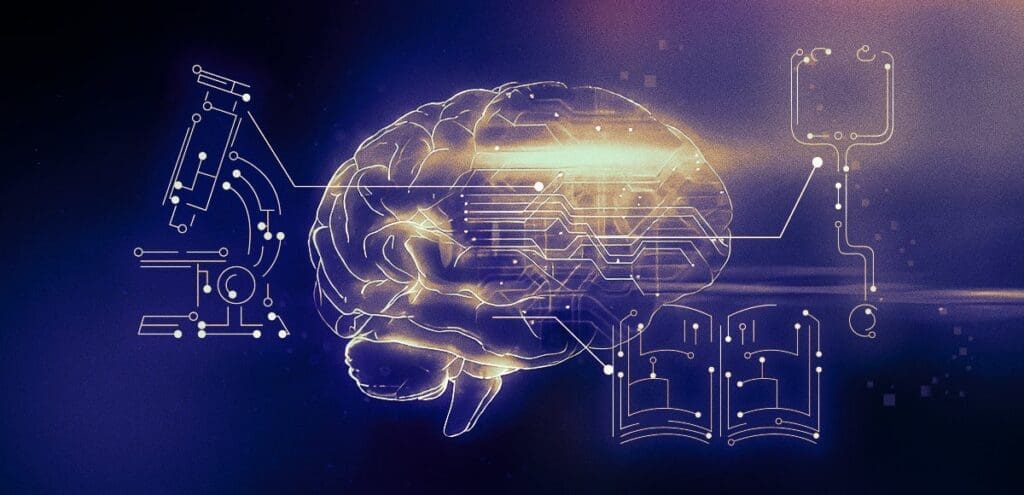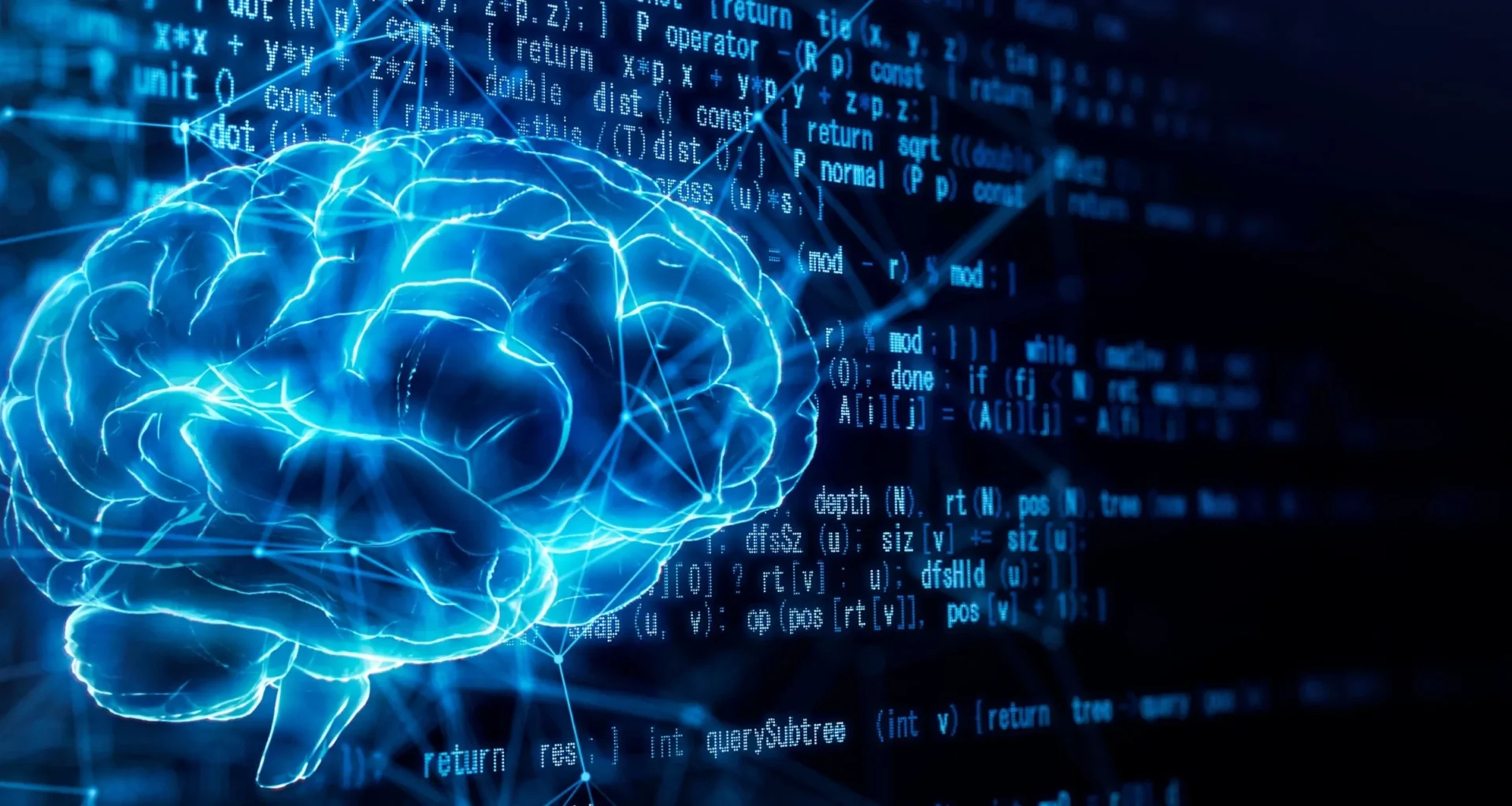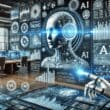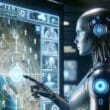Yapay zeka (AI), makinelerin öğrenme, akıl yürütme, problem çözme, algılama ve dil anlama gibi insan zekasının bazı yönlerini taklit etmeye çalışan bir bilgisayar bilimi dalıdır. Temel amacı, insan benzeri yeteneklere sahip akıllı sistemler inşa etmektir. Yapay zeka genellikle “dar” (veya “dar amaçlı”) ve “genel” (AGI, Yapay Genel Zeka) olmak üzere iki ana kategoriye ayrılır. Dar yapay zeka, belirli bir görevi yerine getirebilecek şekilde tasarlanmıştır (örneğin, yüz tanıma veya internet aramaları), AGI ise çok sayıda görevi anlayıp yorumlayabilen, insan zekasına benzer bir zekaya sahiptir.
Yapay Zeka’nın Kısa Tarihi
- 1940’lar ve 1950’ler: Yapay zeka fikri ilk olarak 1940’ların sonları ve 1950’lerin başlarında ortaya çıktı. Alan Turing, Turing Testi’ni sunarak makinelerin insan gibi düşünüp düşünemeyeceğini sorguladı.
- 1956: Yapay zeka terimi, 1956’da Dartmouth Konferansı’nda John McCarthy tarafından ilk kez kullanıldı.
- 1960’lar: İlk yapay zeka laboratuvarları MIT, Stanford ve diğer üniversitelerde kuruldu. Bu dönemde Eliza gibi ilk sohbet botları geliştirildi.
- 1970’ler: Bu dönemde yapay zeka için büyük beklentiler oluştu, ancak teknolojik sınırlamalar yüzünden yavaşladı. Bu döneme “Kış Dönemi” denir.
- 1980’ler: Yeniden finansman ve ilgi ile rule-based systems ve uzman sistemler gibi konular popüler oldu.
- 1990’lar: Makine öğrenimi ve istatistiksel yöntemlerin gelişmesi.
- 2000’ler: Büyük veri ve paralel hesaplamanın yükselişi ile yapay zeka büyük bir ilerleme kaydetti. Algoritmalar (örn. derin öğrenme) daha karmaşık hale geldi.
- 2010’lar ve sonrası: Yapay zeka, her türlü endüstride ve günlük yaşamda giderek daha fazla yer almaya başladı. Gelişmeler hız kesmeden devam ediyor.
Bu sadece yapay zeka tarihine dair çok kısa bir özet. Alan sürekli olarak gelişmekte ve birçok farklı disiplini etkilemeye devam etmektedir.

Yapay Zeka Türleri
Dar Yapay Zeka (Narrow AI)
Bu tür yapay zeka, belirli bir görevi veya görev setini gerçekleştirebilen, ancak ötesinde genel bir yeteneğe sahip olmayan yapay zeka sistemleridir. Örneğin, bir görüntü tanıma sistemi yalnızca resimlerdeki objeleri tanımak için programlanmıştır ve metin analizi yapamaz. Dar yapay zeka, günümüzde en çok kullanılan yapay zeka türüdür. Otomatik müşteri hizmetleri, yüz tanıma sistemleri ve öneri motorları (örneğin, Netflix veya YouTube önerileri) bu kategoride yer alır.
Genel Yapay Zeka (General AI)
Genel Yapay Zeka, çok çeşitli görevleri anlayabilen, öğrenebilen ve problem çözebilen yapay zekadır. Yani, bir Genel Yapay Zeka sistemi, insan gibi düşünebilir, anlayabilir ve hatta duygusal zekaya sahip olabilir. Bu tür bir yapay zeka henüz tam anlamıyla geliştirilebilmiş değildir. Fakat teorik olarak, Genel Yapay Zeka’nın insanların yapabileceği her türlü görevi gerçekleştirebilmesi beklenmektedir.
Süper Zeka (Superintelligence)
Bu, insan zekasının çok üzerinde yeteneklere sahip olan ve teorik olarak var olabilecek bir yapay zeka formudur. Süper Zeka, sadece problem çözme ve öğrenme yeteneklerini değil, duygusal ve toplumsal zekayı, sanatsal yaratıcılığı ve hatta belki de bilincin ötesine geçebilecek kapasiteleri içerir. Bu konsept şu anda büyük ölçüde spekülatif olup, bu tür bir zeka seviyesine ulaşıldığında ne tür etik ve toplumsal sorunlarla karşılaşabileceğimiz konusunda birçok tartışma mevcuttur.
Bu kategoriler, yapay zeka’nın çeşitli formlarını anlamak için yararlı bir yol sağlar, ancak unutulmamalıdır ki yapay zeka sürekli olarak gelişmekte ve bu kategoriler zaman içinde değişebilir.
Yapay Zeka Nasıl Çalışır
Makine Öğrenimi (Machine Learning)
Makine öğrenimi, yapay zeka’nın bir alt dalıdır ve makinelerin veri setlerinden öğrenerek, gelecekteki veri veya durumlar için tahminlerde bulunabilmesini sağlar. Makine öğrenimi algoritmaları, belirli bir görevi yerine getirmek için verilerden “öğrenir” ve zaman içinde bu görevi daha iyi yerine getirebilir. Örnek olarak, bir e-posta filtreleme sistemi, “spam” ve “spam olmayan” e-postalar arasındaki farkı öğrenmek için eğitilebilir.
Derin Öğrenme (Deep Learning)
Derin öğrenme, makine öğreniminin bir alt dalıdır ve yapay sinir ağları kullanarak karmaşık problemleri çözmeyi amaçlar. Özellikle çok katmanlı (deep) sinir ağları sayesinde, derin öğrenme modelleri karmaşık görevlerde etkileyici sonuçlar elde edebilir. Örneğin, görüntü ve ses tanıma, doğal dil işleme gibi görevlerde sıklıkla kullanılır.
Doğal Dil İşleme (Natural Language Processing, NLP)
Doğal dil işleme, makinelerin insan diliyle etkileşimini sağlayan bir yapay zeka dalıdır. Bu alanda çalışan algoritmalar, metni anlama, dil üretme, dil çevirisi ve dilin semantik ve sözdizimsel özelliklerini analiz etme gibi görevlerde kullanılır. Örnek olarak, sohbet botları, çeviri servisleri ve duygu analizi araçları bu alanda geliştirilmiştir.
Bu üç konsept, yapay zeka’nın nasıl çalıştığını anlamak için önemli temel taşlardır. Makine öğrenimi, öğrenme süreçlerini otomatize ederken; derin öğrenme, daha karmaşık ve çok katmanlı problemleri çözebilmek için kullanılır. Doğal dil işleme ise, makinelerin insan dilini anlamasını ve bu dili kullanmasını sağlar. Yapay zeka’nın bu alanları, birçok farklı uygulama ve teknolojinin temelini oluşturmaktadır.

Yapay Zeka’nın Kripto ve Blockchain Üzerindeki Rolü
Yapay zeka (AI) ve kripto para birimleri ile blockchain, teknolojinin farklı alanlarını temsil etse de, birçok yolla bir araya gelmekte ve birbirlerini tamamlamaktadırlar.
Ticaret ve Portföy Yönetimi
Yapay zeka ve makine öğrenimi algoritmaları, kripto para ticareti için otomatize stratejiler oluşturabilir. Algoritmalar, piyasa verilerini sürekli olarak analiz ederek, en iyi alım-satım zamanlarını belirleyebilir.
Güvenlik
Blockchain’in kendisi güvenli bir yapıya sahip olsa da, yapay zeka ek güvenlik katmanları sağlayabilir. Örneğin, AI, ağdaki şüpheli aktiviteleri daha hızlı ve etkili bir şekilde tespit edebilir.
Akıllı Sözleşmeler
Akıllı sözleşmeler, blockchain üzerinde otomatik olarak yürütülen sözleşmelerdir. Yapay zeka, bu sözleşmeleri daha karmaşık ve fonksiyonel hale getirebilir. Örneğin, bir akıllı sözleşme, yapay zeka algoritması tarafından belirlenen koşullara göre otomatik olarak güncellenebilir.
Veri Analizi
Kripto para ve blockchain projeleri genellikle büyük miktarda veri üretir. Yapay zeka, bu verilerin analiz edilmesine ve değerli bilgilerin çıkarılmasına yardımcı olabilir.
Şeffaflık ve Denetlenebilirlik
Yapay zeka, blockchain’in sunduğu şeffaflığı ve denetlenebilirliği daha da ileri taşıyabilir. Örneğin, bir yapay zeka algoritması, blockchain verilerini analiz ederek, sistemin daha şeffaf ve güvenilir olmasını sağlayacak önerilerde bulunabilir.
Otomasyon
Blockchain teknolojileri, iş süreçlerinin otomasyonunda genellikle kullanılır. Yapay zeka, bu otomasyonu daha etkin, esnek ve ölçeklenebilir hale getirebilir.
Yapay zeka ve blockchain’in bir araya geldiği bu ve benzeri uygulamalar, her iki teknolojinin de daha etkin ve güvenilir hale gelmesini sağlayabilir. Ancak, bu entegrasyonun etik ve güvenlikle ilgili soruları da beraberinde getirdiği unutulmamalıdır.
Yapay Zeka’nın Karşılaştığı Zorluklar
Yapay zeka teknolojisinin hızlı bir şekilde ilerlemesi, çeşitli zorluklar ve etik kaygıları da beraberinde getirmektedir. İşte bu konuda dikkate alınması gereken bazı önemli noktalar:
Sistemlerde Önyargı
Yapay zeka algoritmaları, üzerinde eğitildikleri veri setlerinden önyargıları öğrenebilirler. Bu önyargılar, algoritmanın kararlarını ve tahminlerini etkileyerek, belirli bir grup ya da topluluğa karşı haksız uygulamalara yol açabilir. Örneğin, suç tahmin algoritması, etnik köken ya da yaş gibi faktörleri dikkate alarak haksız yargılara varabilir.
İş Kaybı
Yapay zeka ve otomasyonun yükselişi, birçok sektörde iş kaybına yol açabilir. Rutin ve tekrar eden işlerin otomatize edilmesi, çalışanların işsiz kalmasına neden olabilir. Bu durum, sosyoekonomik dengesizlikleri artırabilir ve toplumsal sorunlara yol açabilir.
Yapay Zekanın Kötüye Kullanılması
Yapay zeka, sadece iyi amaçlar için değil, kötü amaçlar için de kullanılabilir. Örneğin, derin sahte (deepfake) teknolojisi, gerçeğe yakın sahte videolar üretmek için kullanılabilir. Ayrıca, yapay zeka destekli siber saldırılar, geleneksel güvenlik önlemlerini aşabilir, dolayısıyla yeni güvenlik riskleri oluşturabilir.
Etik Kaygılar
Yapay zekanın karar verme süreçleri genellikle “kara kutu” olarak nitelendirilir; yani, nasıl bir sonuca vardığı tam olarak anlaşılamaz. Bu durum, özellikle yargı, sağlık ve güvenlik gibi kritik alanlarda ciddi etik sorunlar yaratabilir.
Bu ve benzeri zorluklar, yapay zekanın etik ve sürdürülebilir bir şekilde geliştirilmesi için önemli konuları temsil etmektedir. Çözüm, hem teknolojik yenilikleri teşvik eden, hem de etik ve toplumsal faktörleri dikkate alan dengeli bir yaklaşım gerektirir.
Yapay Zekanın Geleceği
Yapay zeka, son yıllarda inanılmaz bir hızla gelişmektedir ve bu ilerlemelerin birçok sektörü derinden etkilemesi beklenmektedir. Ancak, bu hızlı ilerlemenin beraberinde çeşitli zorluklar ve etik kaygıları da getirdiği unutulmamalıdır. Önyargı, iş kaybı, güvenlik sorunları ve etik dikkate alınmazsa, yapay zekanın topluma zararları olabilir.
Yapay zekanın geleceği, sadece teknolojik yeniliklerle değil, aynı zamanda bu teknolojiyi etik ve sürdürülebilir bir şekilde nasıl yönetebileceğimizle de şekillenecektir. Genel Yapay Zeka ve Süper Zeka gibi konular şu an için daha çok teorik olsalar da, gelecekte bu tür zeka formlarına ulaşabileceğimiz bir olasılık olarak durmaktadır.
Ayrıca, yapay zeka ve diğer teknolojiler arasındaki entegrasyon, örneğin blockchain ve kripto paralar, her iki teknolojiyi de daha etkin ve güvenilir hale getirebilir. Yapay zeka uygulamaları, sağlık, eğitim, ulaşım ve çevre gibi birçok alanda olumlu etkiler yapabilir, fakat bu olumlu etkilerin gerçekleşebilmesi için etik ve toplumsal boyutlarının göz önünde bulundurulması gerekmektedir.
Son olarak, yapay zeka, gelecekte sadece teknoloji ve ekonomiyi değil, toplum yapısını, etik normları ve hatta insan psikolojisini bile etkileyebilecek bir güce sahiptir. Bu nedenle, yapay zekanın geleceğini şekillendirirken dikkatli ve kapsayıcı bir yaklaşımın benimsenmesi önemlidir.




































